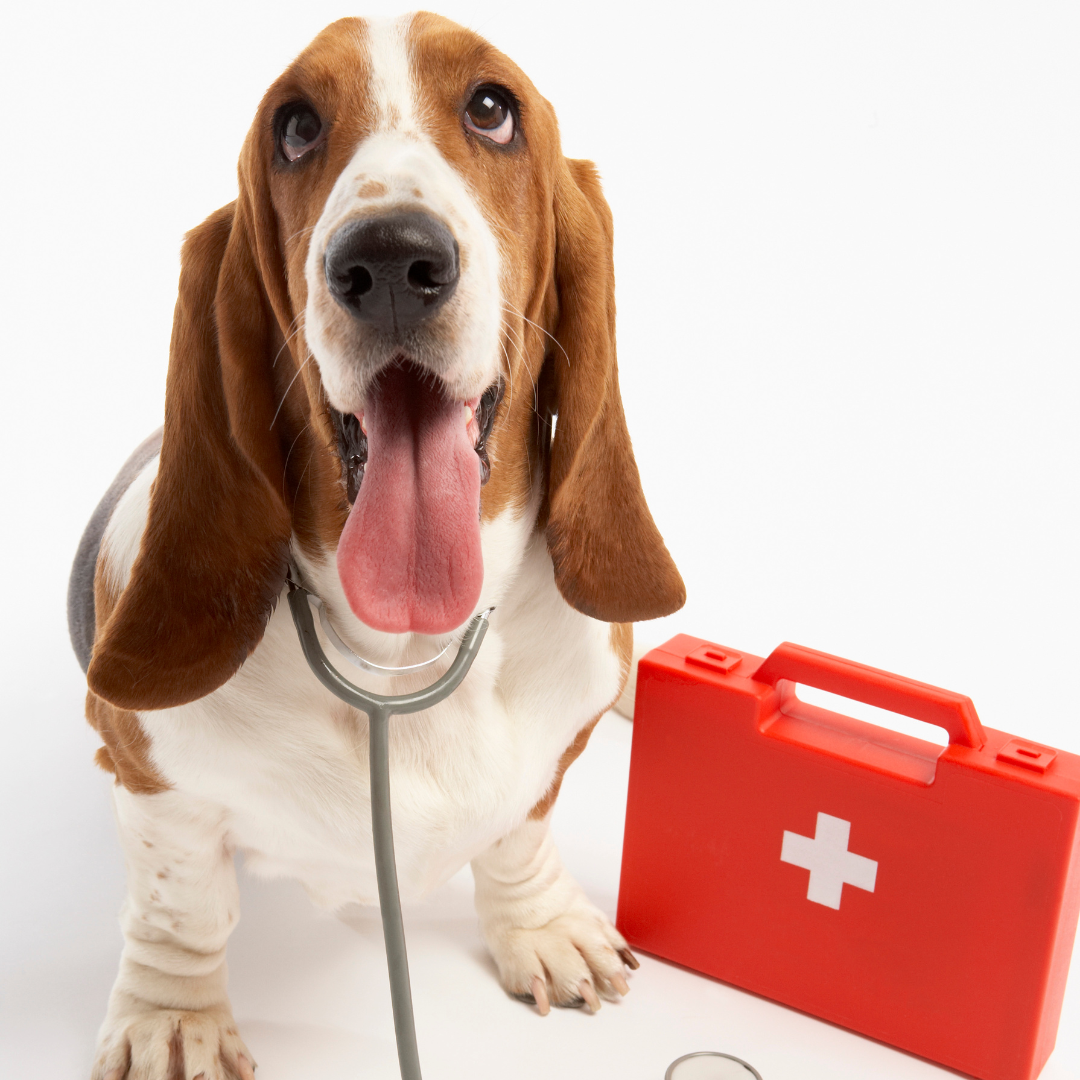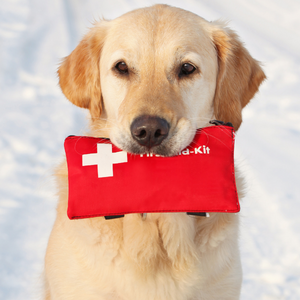Why Have a First Aid Kit?
It’s an inevitable part of life; no matter how hard we try to protect those we love, accidents do happen, and sometimes people unintentionally get hurt. But at PetHub it’s our #1 priority that every family's pets are safe, happy and home. So we like to be prepared for anything.
The four-legged members of your family are no exception, so just as it’s important to learn to administer first aid in the event that your family members are faced with illness or injury, it’s equally imperative to learn how to best assist your pets.
Pets are, by and large, resilient creatures, and often need less care for small and non-life-threatening injuries than do human beings. However, dogs and cats are just as prone to issues such as infection, bruising, blistering, and other painful problems that can spring from seemingly minor injuries.
Treating their scrapes and bumps with a little bit of TLC will do you both a world of good. Natural-Dog’s skin soother is an excellent option for minor blisters, bumps and itchy spots. For more advanced skin concerns such as scabbing, cuts, bites and infections try Sulfodene’s top-rated, 3-way ointment, this ointment is a favorite of vet’s and pet parents alike.
We pulled together an Amazon storefront of Pet First Aid kit products for you to grab what you need in a single visit.
What to Keep in Your Pet’s First Aid Kit?
Designing a first aid kit for your pet really isn’t much different from what you’d keep in your own personal first aid kit, with the exception of adding a leash, and if necessary, a muzzle. Some of the important staples include adhesive tape, gauze, hydrogen peroxide, scissors, and strips of clean cloth. All these items are used for treating, cleaning, and bandaging wounds or injured areas. You should never attempt to use bandages marketed for human use (often called Band-Aids), Neosporin, or any type of liquid bandage on a pet’s injury.
If you have both Dogs and Cats, the ARCA PET Cat & Dog Home Office Travel Car Emergency Kit is a great option to keep at home and take when you travel. The kit is 100 pieces and includes tools for virtually all emergency situations you could have with your fur kids. Kurgo’s basic first aid kit is another great ease of use kit to throw in the car or in the medicine cabinet at home.

Scrapes, cuts, lacerations, broken nails, and bites are often the most common types of injuries your pet will struggle with, especially if you own a dog that isn't friendly with other dogs.
Like humans, many dogs and cats suffer from allergies and skin issues, which is why it’s essential to stock your kit with items such as Benadryl and hydrocortisone cream. If necessary, Benadryl can also serve as a sedative that will calm down an injured animal (most tranquilizers and pain relievers prescribed for humans are inappropriate for consumption by animals and may cause severe injury or even death). Check with your vet before giving your pet any other type of over the counter or prescription medications designed for human beings.
Other useful first aid items include tweezers (for splinters), saline eye solution, tongue depressors, cotton balls, restraints, plenty of blankets and towels, a thermometer, and wooden sticks—like the ones used for mixing paint—to help devise a splint.
As you would with any human, it’s important to keep information regarding your pet’s medical conditions, allergies, and the contact number of their primary veterinarian in your reach at all times. One of the most convenient ways to store this information is through high-tech ID tags, such as PetHub’s Digital Pet ID Tags. As the name suggests, these tags have a QR code on the back that when scanned links to a free online pet profile, holding critical pet information from essential medical data (e.g., last rabies vaccination, medication, allergies, etc.) to their primary providers (e.g., veterinarians, pet sitters) and their contact info.
The Importance of CPR
CPR, which stands for cardiopulmonary resuscitation, is an emergency, lifesaving procedure meant to be performed on a patient who has stopped breathing, whose heart has stopped beating, or both. It is often used on humans and has been proven to save lives until help arrives. The same holds true for dealing with your pets, and the science behind the process is exactly the same.
The process of CPR involves using rescue breathing while applying chest compressions, keeping oxygen flowing through the lungs while encouraging the heart to beat through artificial means. Any pet parent, like any parent who has just had a child, should take a class in order to become certified in CPR.
When to Seek Professional Help
Not all injuries heal on their own, so if your pet appears to be in severe pain, is losing blood rapidly, has sustained a head injury, is choking, or has a broken bone, it’s important to take your pet for emergency treatment right away. Not all veterinarians have a large enough staff or the necessary facilities to offer emergency care 24 hours a day, 7 days a week, but unless you live in a very small town, the vet will refer you to an emergency clinic that’s the closest to your home. This information can easily be accessed and changed at any time you have an Internet connection.
Prompt treatment of injuries is especially important in larger dogs, like German Shepherds, Great Danes, and Labrador retrievers, who are susceptible to a fairly common stomach condition known as bloat. While it might seem your pet is simply ill and vomiting due to a virus or something they should not have eaten, certain breeds are predisposed to this condition that is often fatal. If you have a larger dog that is consistently vomiting, lethargic, and appears to be in pain for more than 30 minutes, it’s essential to drive to the hospital right away.
Likewise, if you suspect your pet has ingested any sort of medication or poisonous household substance, call for help right away. You may be instructed to induce vomiting before rushing your pet to the emergency room, a step that could potentially be lifesaving.
If your dog has been in a fight with another dog, and it appears that dog has bitten your dog, it’s important to take your pet to the clinic to receive help, particularly if their rabies vaccinations are not up-to-date. To stay on top of your pet’s vaccination, it’s important to set reminders so you can set an appointment well in advanced for your pet’s next shot. Having an online profile for your pet will allow you to easily access the dates of your pet’s last vaccinations so you can plan accordingly.
In almost all cases, first aid is meant simply as a temporary measure. A follow-up with a veterinarian should always occur, or in cases of severe trauma, an immediate visit to the emergency clinic is necessary. If you don't have pet insurance yet, now is the time to get your paws on a policy. It can help you with any unexpected expenses that may come up because of an accident or injury. Need help finding insurance that works for you and your pet? Check out our comparison tool to get quotes from multiple insurance providers at once!



